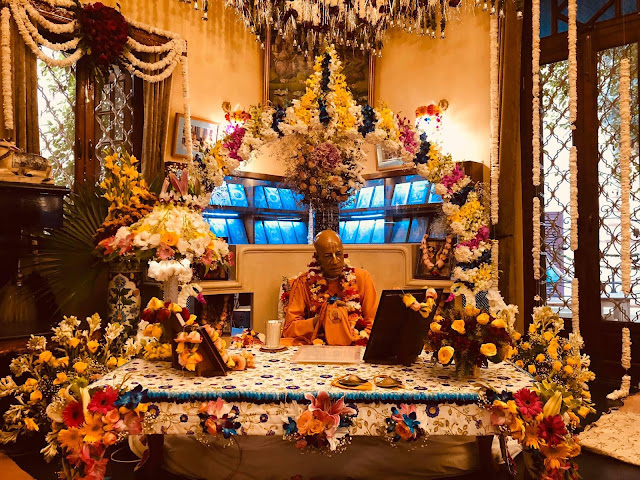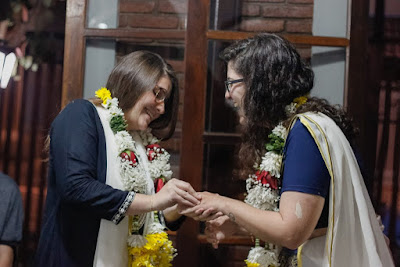Stop ISKCON from Becoming an Apasampradaya – Part 1
This is the first part in a series of articles showing how the SAC’s FDG 2005 paper, on which the GBC’s FDG resolution of 15th October 2019 had been based on, was refuted by another paper commissioned by the erstwhile IRGB in 2010. In this way the paper (SAC FDG 2005 ) was shown to be not according to guru, sadhu and sastra and we therefore raise the question; how could such a paper be used to base a GBC resolution?
In part 1 we look at two anomalies in the procedure of discussion and writing of the 2005 SAC paper which were mentioned in the IRGB paper. Firstly, a supposed candidate that was involved in the discussion, Urmila Devi Dasi was the woman nominated to be a FDG. And secondly the SAC claimed to temporarily allow a member of the group of Vaisnavas raised in Bharat to join in the discussion and writing of the paper to allow a fair hearing from all sides. Whereas they did admit such a person, when he left the discussion early on due to some reasons, they did not replace him for the entire duration of the discussions and writing of the paper.
The following extract from the IRGB paper details the two anomalies;
———- Extract Begins ———-
Anomalies
Before dealing with the philosophical aspects of the SAC paper, we wish to bring to the attention of the GBC two anomalies. The first concerns Urmila devi dasi, who [in 2010 when this paper was written] was the woman to be nominated as a diksa-guru, and hence was the very reason that the SAC was asked to research the matter. However, since Mother Urmila was also a member of SAC, a very clear conflict of interest resulted, which is why the SAC stated:
“SAC members felt that the circumstances of the task were valid, and the topic interesting, and so accepted the task. Urmila-devi, however, being a SAC member involved in this case before the GBC, excused herself from the discussion and writing of this paper.”
Yet this turned out to be a false statement. On our inquiring about the veracity of this statement, two SAC members (HH Bhakti Rasamrta Swami and Sriman Mukunda Datta Prabhu) stated that while Mother Urmila did not participate in the actual writing of the paper, she was definitely involved in the discussions that constituted the substance of the document. To exactly what extent her involvement might have swayed the outcome of the SAC paper is conjectural, but the fact that the SAC chose to cover up her involvement is in itself troubling.
[It is interesting to note that the new candidate for female diksa guru, Narayani Mataji, is a newly appointed SAC member. It seems that being appointed as a member of SAC is part of the Cursus honorum for becoming a female diksa guru.]
Secondly, the SAC wrote:
“Furthermore, in order to ensure that all sides of the topic were properly represented, SAC accepted a temporary member representing Vaisnavas raised in Bharata where one might question the propriety of female devotees as gurus due to cultural background.”
This statement is actually misleading. That sole member from Bharata, Devamrta Prabhu [now H.H. Bhakti Rasamrta Swami], explained that his involvement was very limited, and only in the initial stages:
“I was involved in the initial stages. I helped in the research with the Madhva sampradaya. But then since I was not able to cope with my heavy load of other services I withdrew myself from the SAC after speaking to the convener, Purnacandra Prabhu (now Goswami).”
While Devamrta Prabhu’s leaving was not the SAC’s fault, the SAC should have replaced him with someone else, or better still, with several others born in India. Not only did the SAC not do this, but it falsely stated that native-born Indians were actively involved and “properly represented.” Again, that simply was not true.
These two anomalies of obfuscating the truth are completely incongruent with brahminical behavior, which of course the SAC is supposed to embody. Besides damaging the credibility of the SAC, such a discrepancy sows doubt in the minds of the reader: Was the SAC paper fair and unbiased, or was it written from a strictly “Western-centric, modernist, feminist” position, with a predetermined conclusion already in place? This lack of transparency on the part of the SAC seriously undermines its credibility.
———- Extract Ends ———-
For emphasis, I repeat a sentence from the above extract;
“These two anomalies of obfuscating the truth are completely incongruent with brahminical behavior, which of course the SAC is supposed to embody. Besides damaging the credibility of the SAC, such a discrepancy sows doubt in the minds of the reader.”
Thus the SAC did not produce their FDG 2005 paper according to proper guidelines and it was not fit to base a major resolution on (FDG Resolution of 2019) which drastically changes the social and managerial aspects of ISKCON.


Comments
Post a Comment